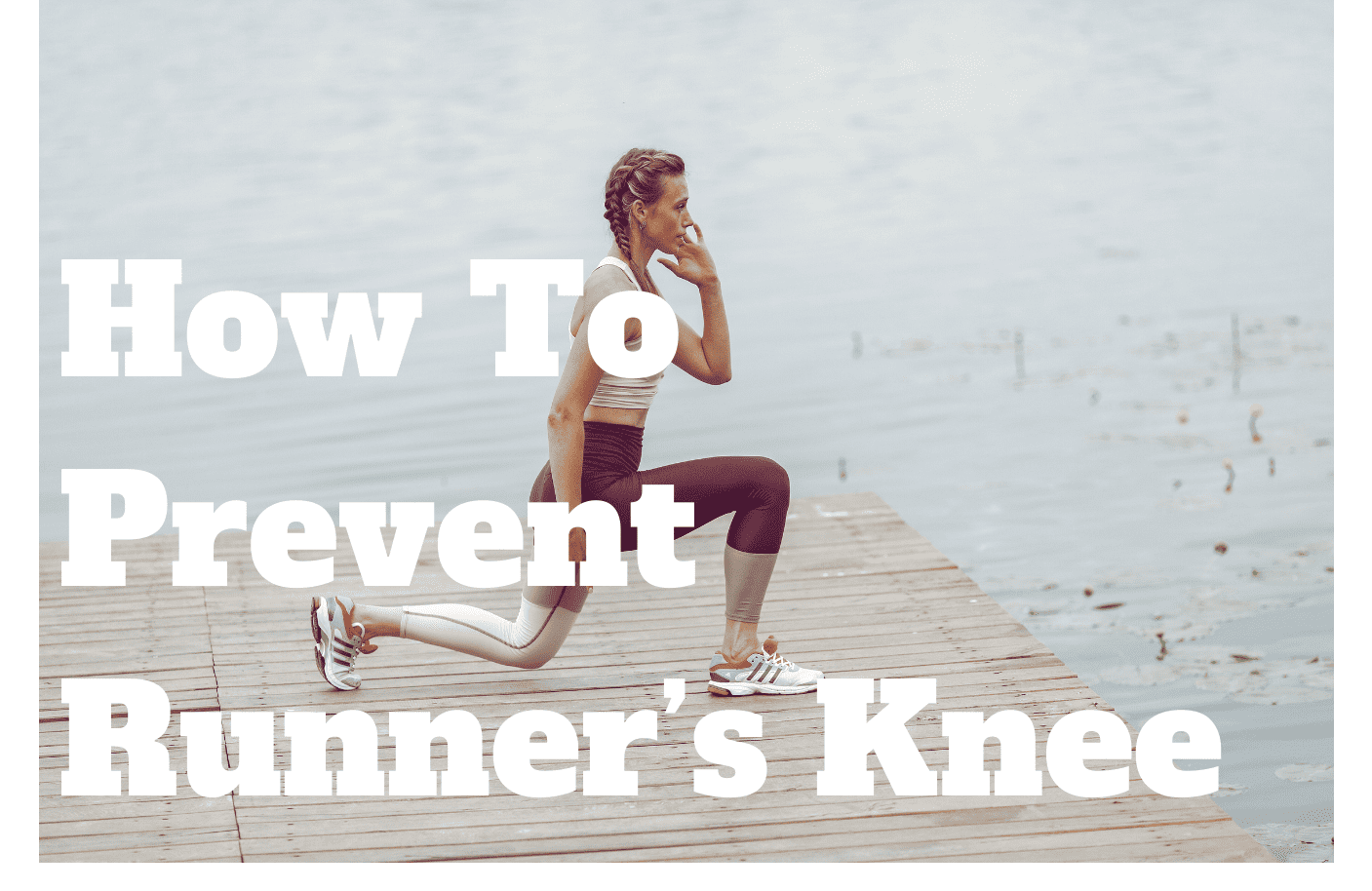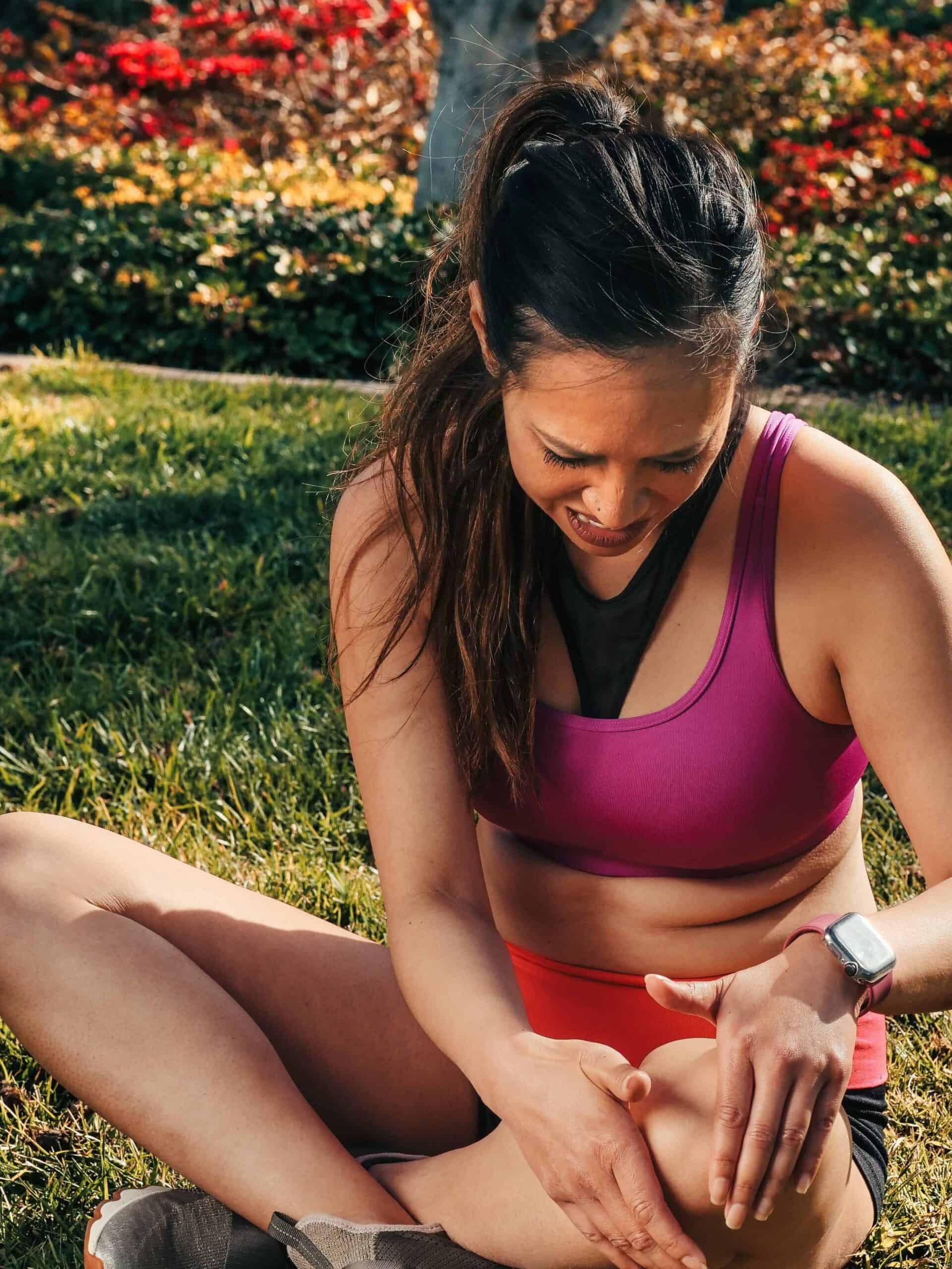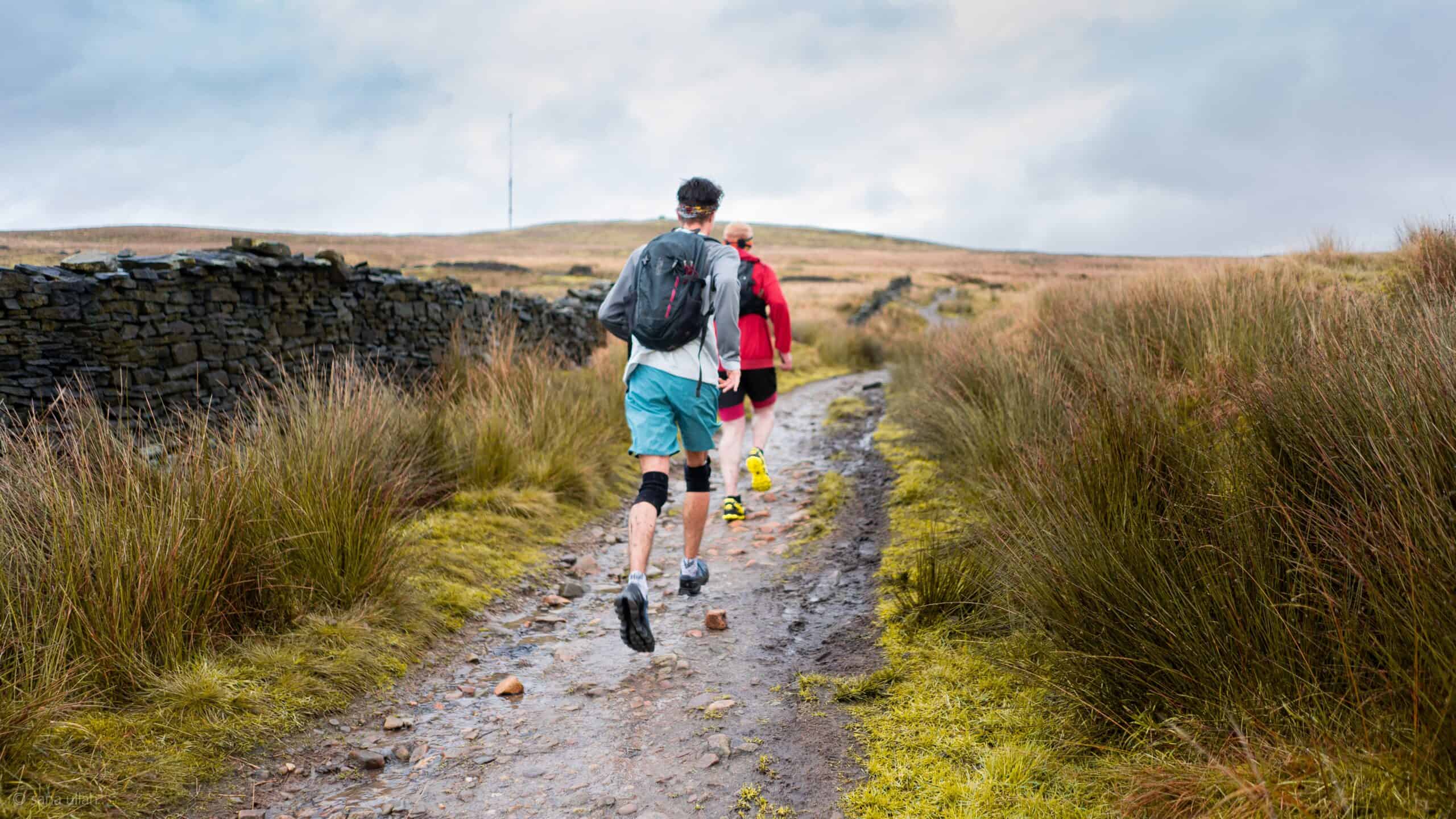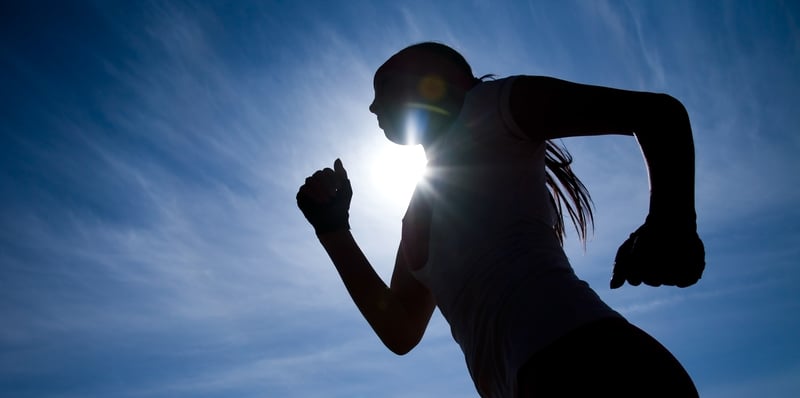As someone who loves running, there are probably few things worse you can experience than pain in your knees. In modern medicine, it’s been decreed that in fact, running is not bad for your knees. In fact, it’s actually beneficial for your knees. Despite this, any joint with prolonged impact without the right training can experience injury. As many as 25%-30% of runner’s experience runner’s knee during the course of their training. So, what’s the best way to think about how to prevent runner’s knee?
The scientific name for runner’s knee is patellofemoral pain syndrome. At it’s core, runner’s knee is an overuse injury and is one of the most common running injuries.
The good news? Preventing runner’s knee is possible. And, it’s much easier than you might think it would be.
In this post, we’ll cover some helpful tips to keep in mind if you want to know how to prevent knee pain when running.
In this article:
- What is runner’s knee?
- What causes runner’s knee?
- How to prevent runner’s knee
- Symptoms of runner’s knee
- Tips to heal and treat runner’s knee
What is Runner’s Knee?

Runner’s knee is a condition that causes pain around your kneecap or, you may have heard a physician call it a patella.
Runner’s knee occurs when the patella bone rubs against the femur bone. This rubbing causes pain and inflammation to the runner.
What’s the cause of runner’s knee? Most commonly, overuse. Also known as running too fast or too far too quickly. This causes the muscles and tendons around the patella to become strained.
Other, less common factors that contribute to runner’s knee include wearing inappropriate or poorly fitting running shoes, improper running form, or generally weak muscles supporting the knee.
Most runners experience the sensation of knee pain or tenderness behind the knee cap during or after running.
You may also experience a popping or grinding sensation when bending or straightening the knee. Swelling may also occur around the knee joint.
What Causes Runner’s Knee?
One of the common causes of runner’s knee is muscular imbalances particularly in the hips and knees.
More specifically, if there’s weakness in one area of your running form, it can create extra stress on the other muscles as a form of compensation leading to imbalance and overuse.
One example, a lack of ankle mobility can contribute to excessive stress on the knee joint.
The most common cause of runner’s knee is overtraining or overuse. When you increase your mileage, distance, or intensity of your runs too quickly, the stress placed on your knee joint and surrounding muscles will lead to inflammation.
The knee joint requires time to adapt to the stress and impact of running. A general principle for increasing your mileage safely is to only increase by 10% of your weekly mileage from one week to the next. Additionally, your long run mileage should not exceed 50% of your weekly run mileage.
Poor running form can cause to knee pain as strain will be placed on the muscles supporting the knee joint. Poor running form is often caused by muscle imbalances and can be treated with strength training or specialized products like footwear. For example, a common cause of runner’s knee is a knee that collapses inward.
If your knee is collapsing inward, you’ll need to work on strengthening exercises for your stability muscles like your glues and invest into stability running shoes.
How to Prevent Runner’s Knee

At times, it may seem downright frustrating to prevent knee pain when running, especially if it’s something you’ve been dealing with chronically over the course of your running career.
But rest easy, it is possible to prevent runner’s knee.
Here’s our top tips starting from the most simple, to the most rigorous:
Stretch and Warm Up Before Running
One of the best tips for how to protect knees while running is to stretch.
While everyone has different experiences with a warm up, stretching or a general warm up before every workout is recommended for injury prevention.
By doing so, you increase blood flow into the parts of the body being targeted, which, has been proven in studies to reduce the risk of injury.
A five-to-ten-minute warm-up gets your blood pumping to your muscles and increases the elasticity of your ligaments and tendons.
Focus on stretching exercises that that target your hamstrings, quadriceps, and kneecap to prevent runner’s knee.
Avoid static stretches before your run.
Wear Proper Shoes
Your running shoes are the most critical investment you’ll make as a runner – and another top tip when it comes to how to prevent knee injury running.
With the right pair of shoes, you’ll avoid foot injuries, protect your knees, and improve your performance.
When you’re searching for running shoes, look for ones with good arch support, stability, and cushioning.
Related: The 9 Best Running Shoes For Knee Pain
Avoid Overtraining
Overtraining will lead to excess fatigue. A fatigued muscle and joint is one that is more likely to get injured. Gradually increasing your mileage, speed, and distance is important.
Using a training plan like the Half Marathon Guide Training Plan is designed to safely scale your running distances without injury. If you prefer something more responsive to your training and goals, consider an app like Runna. Using code HALF you’ll receive 2-weeks of free premium training.
Cross-Train
Cross-training is an essential component of any exercise routine and can reduce your risk of getting injured.
Incorporating a second form of training like biking or swimming, will allow you to expand your aerobic cardio capacity without fatiguing the same muscle groups.
Not sure how much cross training to do? Here’s a guide for how much training to incorporate during injury or recovery period.
Strength Training
Strength training is the most important component to stabilizing your knee after experiencing runner’s knee.
If you’re looking to fortify the knee joint and the auxiliary muscle groups that support strength in running, here are the five strength training exercises to incorporate:
- Lunges: Do 3 sets of 10 reps per leg. Perform before you run as a warm up.
- Bulgarian Split Squats: Start without any weight. Do 3 sets of 10 reps per leg.
- Clam Shells: Start without any Resistance Bands. Once you can complete 30 reps per side, begin to incorporate resistance. These are great as you can increase the resistance as you improve.
- Single Leg Squats: If you have weak knees, every running coach will tell you to work on this. Running is simply the act of hopping from one leg to the other.
- Monster Walks: Strengthen the glute medius. 30 repetitions in each direction.
Symptoms of Runner’s Knee
Pain is often one of the prominent symptoms of runner’s knee.
Typically, it occurs in the front of the knee. This can vary from a mild ache to a sharp, stabbing pain during movement. It can also occur as a dull pain just around the knee cap (or on the side) that occurs during movement only. It may be exacerbated after long runs or walking after sitting for a long time.
It’s often aggravated by walking downstairs or squatting.
Here’s a list of other symptoms you might encounter:
- Pain in the glutes or legs (besides the knee): You may be surprised that a problem in the glutes or other imbalances in the legs could lead to knee pain, but when these other areas are weak, it can cause hip instability, leading to knee pain. These symptoms often appear simultaneously and worsen with activity.
- A clicking knee joint: This is another tell-tale symptom of runner’s knee. When the knee clicks or pops as you move, it can signify misalignment or displacement of the patella. The patella is a small bone that sits at the front of your knee.
- Front of the knee pain: This is yet another common symptom of runner’s knee. The dull or sharp ache may worsen when kneeling, going up or downstairs, or even sitting for an extended period with your knees bent.
- Weakness: Last but not least, weakness in the knee or other areas of the leg is a common sign of runner’s knee to pay attention to. You may find that your knee feels unstable or loose. It may even cause you to lose your footing and balance while running or walking. In some severe cases, you might experience sharp pain when reaching a top speed during runs.
The most important thing to remember about runner’s knee is that it’s a gradual onset injury.
This means that the symptoms will slowly build over time.
If you begin feeling any of these symptoms during your run, stop running. Likely, there is inflammation that, if continued running on, will become a more persistent issue.
How to Treat Runner’s Knee

If runner’s knee is the ailment that’s giving you the most problems the most frequently, it might be time to seek treatment. The good news is that there are lots of treatment options for runner’s knee.
While it’s always best to take preventative measures to get rid of runner’s knee before it can even start, the following are some good ways to prevent your pain from getting worse (and stop it in its tracks).
Give Taping or a Knee Brace a Try
One effective way to relieve the pain of runner’s knee is to use taping. You can tape the patella tendon or inactive structure of your knee that is causing the pain. Use KT tape or knee brace to do this.
Taping your knee helps to provide support to the area of discomfort and can relieve the pressure on the knee cap, reducing the pain. Be sure to seek advice from a medical professional on the right taping technique to use.
Massage The Knee
Because runner’s knee is due to inflammation and (possibly) a buildup of scar tissue, one of the best ways to support knee recovery is through targeted massage. You can use a percussive therapy tool like the Theragun or you can use a foam roller.
You should target the upper part of the knee and massage for between 8 to 10 minutes. We’ve found this video from the Run Experience to be the most helpful.
Give Orthotics or Inserts a Go
Orthotics or inserts can be used to ease the pain caused by runner’s knee. Orthotics help to provide additional support to your foot, ensuring that it is well-placed and can bear the weight.
The placement of orthotics or shoe inserts helps to minimize stress placed on the knee. Again, be sure to get the right fitting for effective support.
We exclusively use Superfeet products.
Use Over-the-Counter Painkillers (But Sparingly)
Over-the-counter (OTC) painkillers such as ibuprofen and non-steroidal anti-inflammatory drugs can help to reduce inflammation and relieve pain. Always be sure to take these drugs as instructed – and sparingly.
Try not to depend on these drugs for prolonged periods. If the pain persists, seek medical help. And don’t use them as a preventative. While it’s tempting to pop an Advil every time you head out the door for a run, overusing these medications can do more harm than good in the long run.
Seek the Opinion of a Healthcare Professional
If the pain in your knee persists, seek medical attention. A medical professional can diagnose and evaluate the best course of treatment for your case.
Depending on the severity of the condition, your doctor may recommend involving a sports medicine specialist, an orthopedic surgeon, or a physical therapist. In more complex cases, you may need x-rays, scans, or surgery.
Closing
While runner’s knee can be a frustrating and painful experience, it’s important to remember that it’s preventable with the right tips and techniques. By wearing proper shoes, mixing up your routine, strengthening your leg muscles, watching your form, and listening to your body, you’ll be well on your way to a pain-free running experience.
The more you take care of your knees while running, the more you can prevent runner’s knee – and the more you’ll be able to enjoy the sport you love the most.





